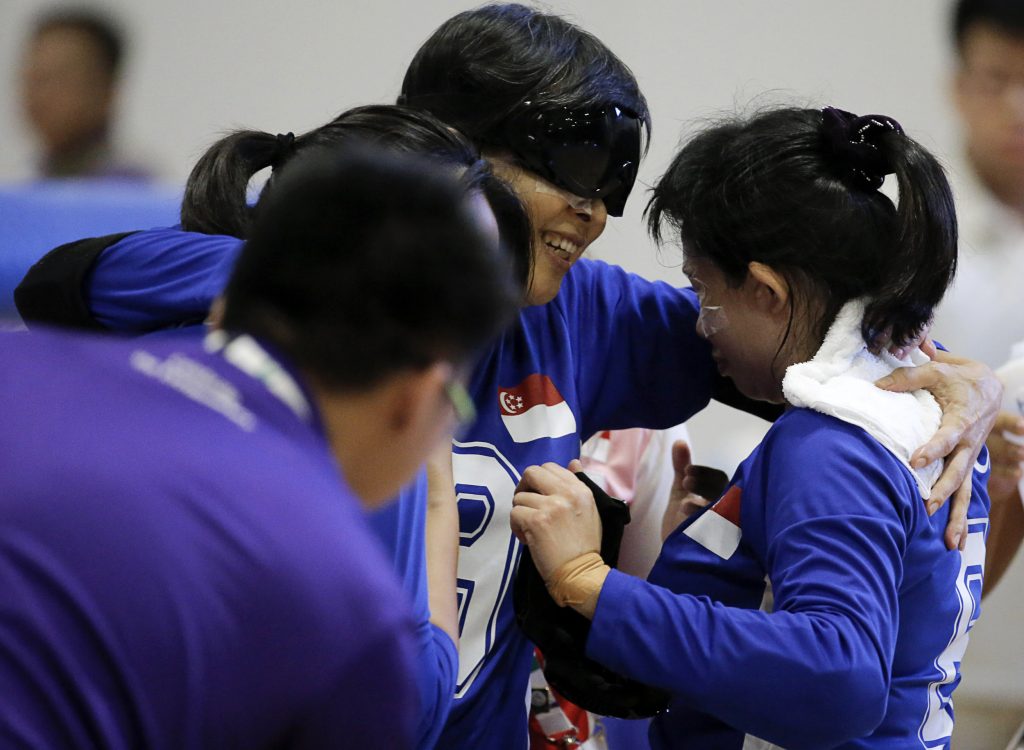
Goalball was originally designed as a rehabilitation activity for visually impaired World War II veterans, and was only introduced as a team sport at the 1976 Toronto Paralympic Games. Since then, Goalball has evolved into a team sport and is played by both men and women’s teams. At the Paralympics, only athletes who have less than 10 percent of their vision remaining, or a visual field restricted to 20 degrees are allowed to participate. All players are also required to wear special blackout glasses on court so that all can compete on an equal footing. The eyeshades have to be worn at all times on court, and cannot be touched unless it is permitted by the referee.
The dimensions of the court are 18m by 9m. The goals stand at 1.9m and are placed at both ends of the court, spanning its entire width. The ball used is made out of hard rubber and has a diameter of 25cm. Two bells are concealed within the ball to help the players orientate the direction of the on-coming ball; a string is also placed under the court lines to aid players in orienting their positions in the playing area. Generally, boisterous cheer goes hand-in-hand with sports. Contrarily, Goalball is unique because absolute silence is required in the venue so that players can listen out for, and react to the ball.
The objective of the game is to score goals; players attempt to roll the ball into the opposing goal. At the same time, defending players try to prevent goals by shielding against attacks with their bodies. At any time, there are 3 players on court, and a maximum of 3 substitutions is allowed. Each team has ten seconds from the first successful defensive action to get the ball across the centre court line. The game is won by the team who has scored the most goals after the end of two halves. The duration of each halve is 12 minutes and is separated by a 3-minute break-interval.
Although every athlete competing in Goalball has a visual impairment, a classification system is still put in place so that athletes with similar degrees of visual impairment compete against each other. The classifications are as follows:
Benefits of Goalball
Often, individuals who are visually impaired or blind do not have many opportunities to involve themselves in physical activity, let alone team sports. Goalball then becomes very meaningful because it specifically creates an environment beyond just-an-activity for the visually impaired; communication, coordination, strategies, and split-second reactions are crucial elements of Goalball. Yet, the game is played in hush. This pushes the players beyond the ordinary realms of communication, fostering a unique mode of teamwork and cooperation between participants that cannot be found in any other sport. This spectacular outcome is sure to boost the confidence of participants.
Goalball also serves as a medium to reconcile those who are sighted and those who are visually impaired. By participating together (at a recreational level), the able community benefits because of greater awareness of what visually impaired individuals, when given the opportunity, can achieve.

